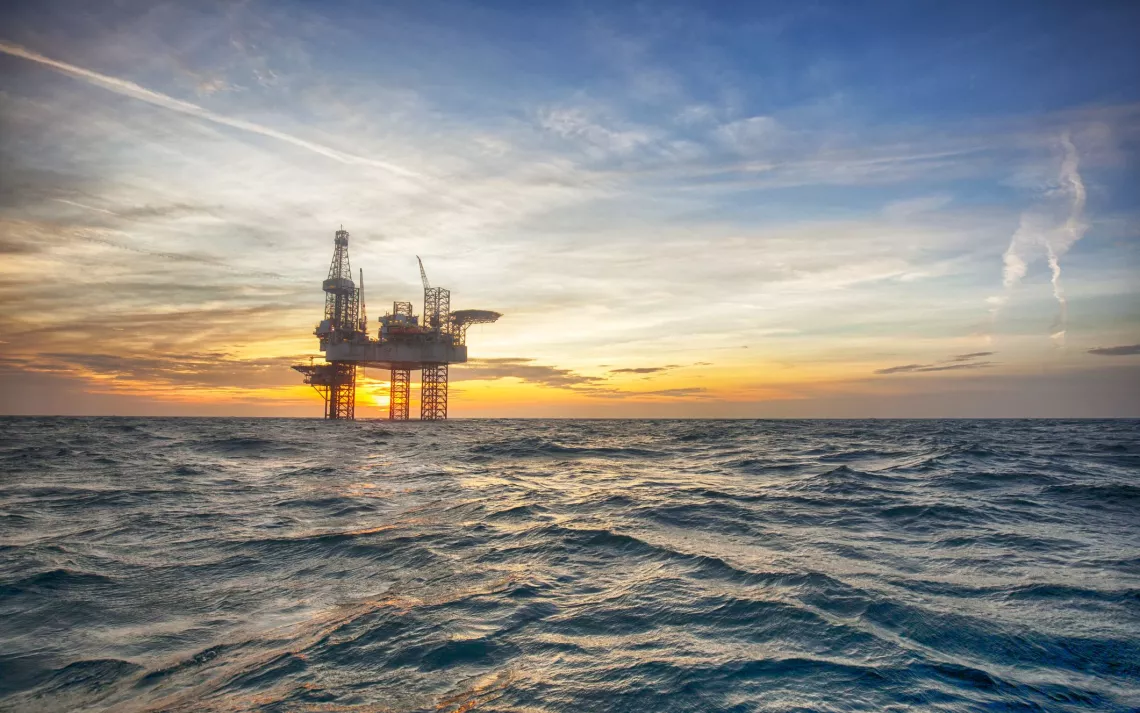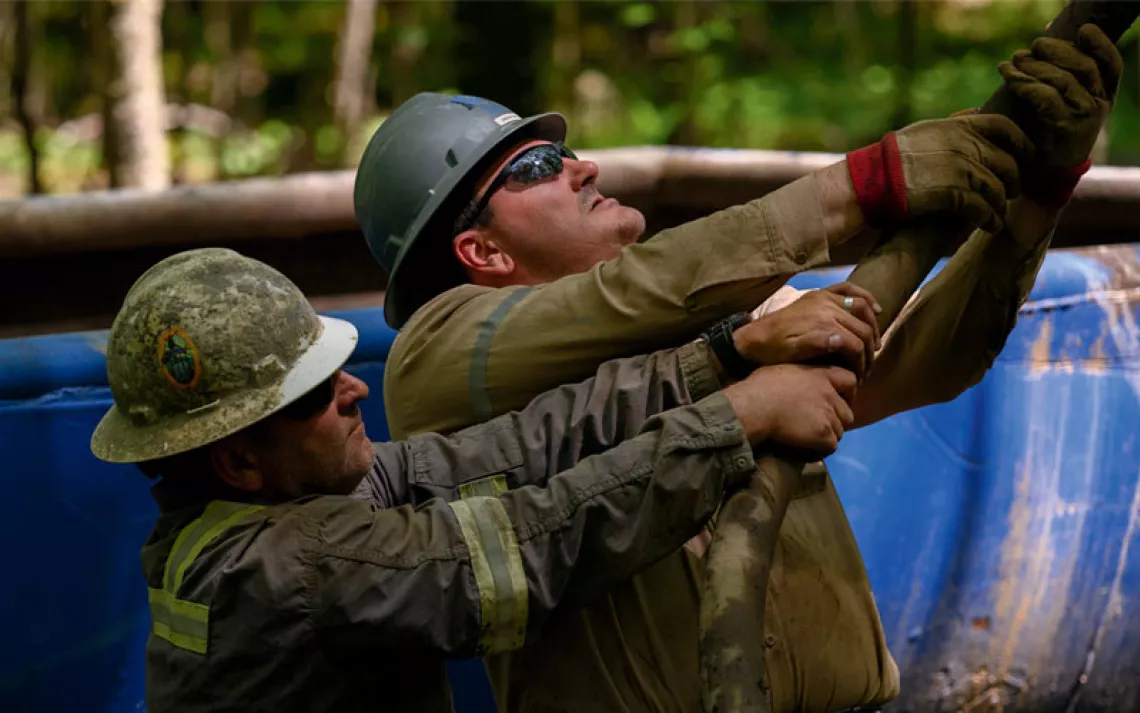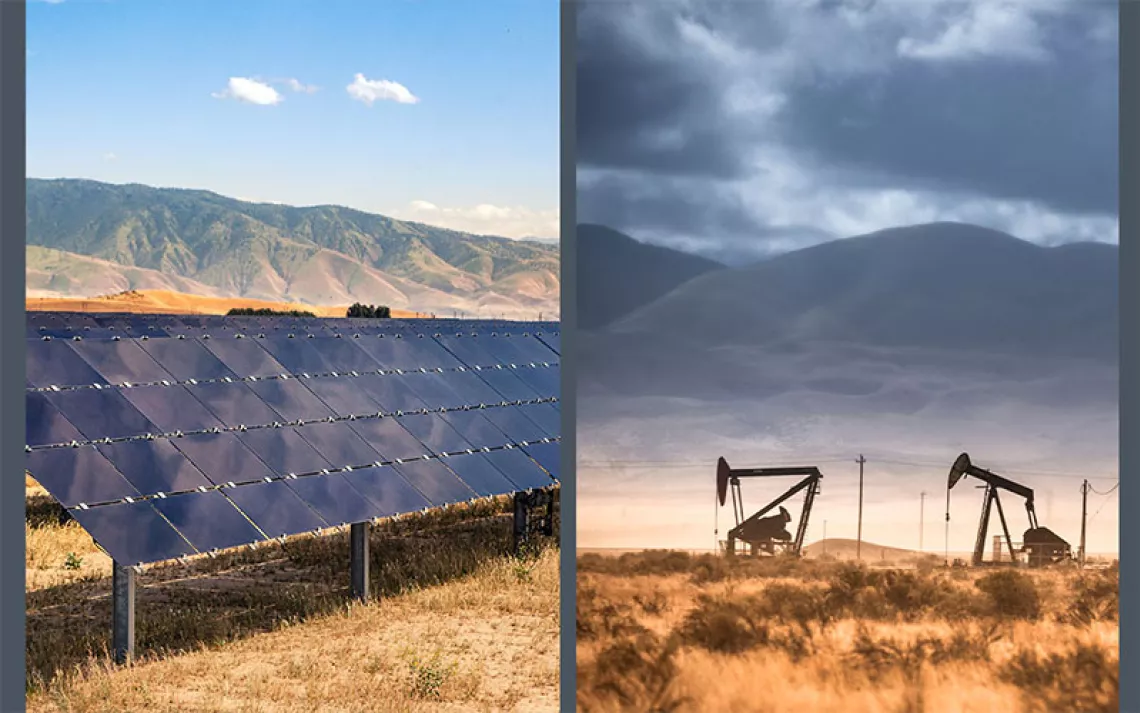Proposed Changes to Safety Rule Suggest Influence of Offshore Drilling Industry
Revisions to the Well Control Rule would loosen oversight and inspection of oil rigs

Photo by nielubieklonu/Istock
On May 11, the Interior Department published its proposed changes to the Well Control Rule, one of a host of safety regulations put in place after the disastrous Deepwater Horizon oil spill in 2010. It will take some time for industry and legal experts to fully assess the proposals, but the early takeaways suggest a disturbing, if unsurprising, trend toward less oversight and monitoring of safety equipment like blowout preventer systems.
A blowout preventer is exactly what it sounds like—a safety valve that is designed to automatically seal a well in the event of a blowout. In the aftermath of Deepwater Horizon, a government investigation determined that a design flaw prevented the valve on the Macondo well from operating the way it was intended. That failure proved catastrophic: Eleven men were killed and 17 others were seriously injured, and about 1,100 miles of coastal marshes and beaches along the Gulf of Mexico were contaminated with oil.
It took until April 2016 for the Well Control Rule to be finalized, but only a year later, President Trump issued an executive order instructing the Interior Department to review the Obama-era drilling safety regulations. Offshore oil drilling companies have made no secret of the fact that they find those regulations to be burdensome. And the Trump administration appears to be listening. The White House appointed Scott Angelle, a former state official in Louisiana with close ties to the oil and gas industry, to oversee the Bureau of Safety and Environmental Enforcement, an agency that was created after the Deepwater Horizon disaster. The New York Times reported that at a meeting of independent oil rig operators in September, Angelle reassured executives that help was on the way.
BSEE has sought to minimize its effort to revise the Well Control Rule, emphasizing that the proposed changes impact only 59 of the rule’s 342 provisions. But the changes, if enacted, could nonetheless have a significant impact on overall safety. At least one change involves the loosening of requirements around third-party monitoring of safety equipment. Under the old rule, third-party inspectors had to be certified by BSEE, but under the new plan, operators would have much more leeway to choose their own third-party verifiers. Under another suggested revision, operators would be allowed to perform less real-time monitoring of equipment while it is in use. Other changes aim to reduce the number of circumstances in which drilling operators are required to halt operations while they wait for approval for permit revisions.
Devorah Ancel, a staff attorney with the Sierra Club’s Environmental Law Program, says, “The administration appears to be giving into industry’s complaints that the previous rule forced operators to halt operations every time there was a change in plan. Operators have argued that having to seek approval by the regulator for additional safety measures ends up costing the industry a lot of money.”
According to BSEE, a proposed rewrite could save offshore operators an estimated $946 million over 10 years. But should saving the offshore drilling industry money really be BSEE’s priority when the industry continues to prove that it is unable to regulate itself?
In March, when BSEE conducted a number of surprise inspections of offshore oil rigs to examine crane safety, the agency found a raft of serious problems. And a New York Times report found that smaller oil and gas companies, which have tended to push hard for the safety rollbacks, have been cited for workplace safety violations at a much higher rate than the industry average.
It’s important to bear in mind that the proposed changes to the Well Control Rule, which are now subject to a two-month public comment period, have been put forth in tandem with the Trump administration’s aggressive effort to vastly expand offshore drilling along virtually all U.S. coastlines and into deeper waters than ever before—all of this when the industry has yet to even fully implement the lessons learned from the Deepwater Horizon catastrophe. With the shift to deregulation, progress on finalizing any new safety measures has slowed considerably.
But the even bigger takeaway for Ancel, and a fact that is easily obscured in the current debate about the Well Control Rule, is that blowout preventers have never actually been proven to be effective at stopping an oil spill. “The technology for blowout preventers is improving, but you can’t test it under live situations other than when there’s a blowout. As far as I know, there’s only been one test in the ultra-deep waters off of our coast, and it didn’t work,” she says. “Given this uncertainty, it seems unconscionable to simultaneously propose weakening safety measures and expanding drilling in riskier environments off all our nation's coastlines.”
 The Magazine of The Sierra Club
The Magazine of The Sierra Club



